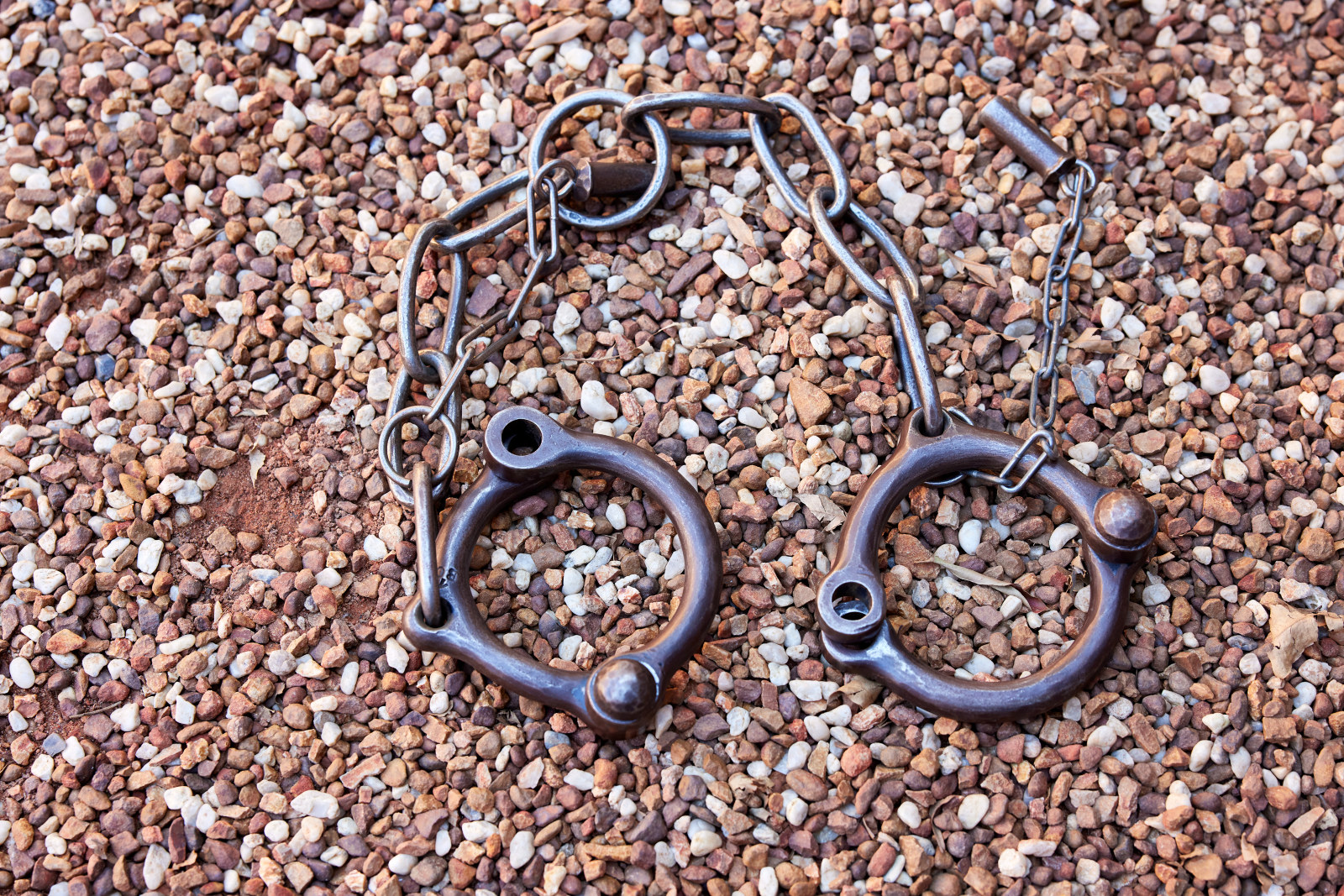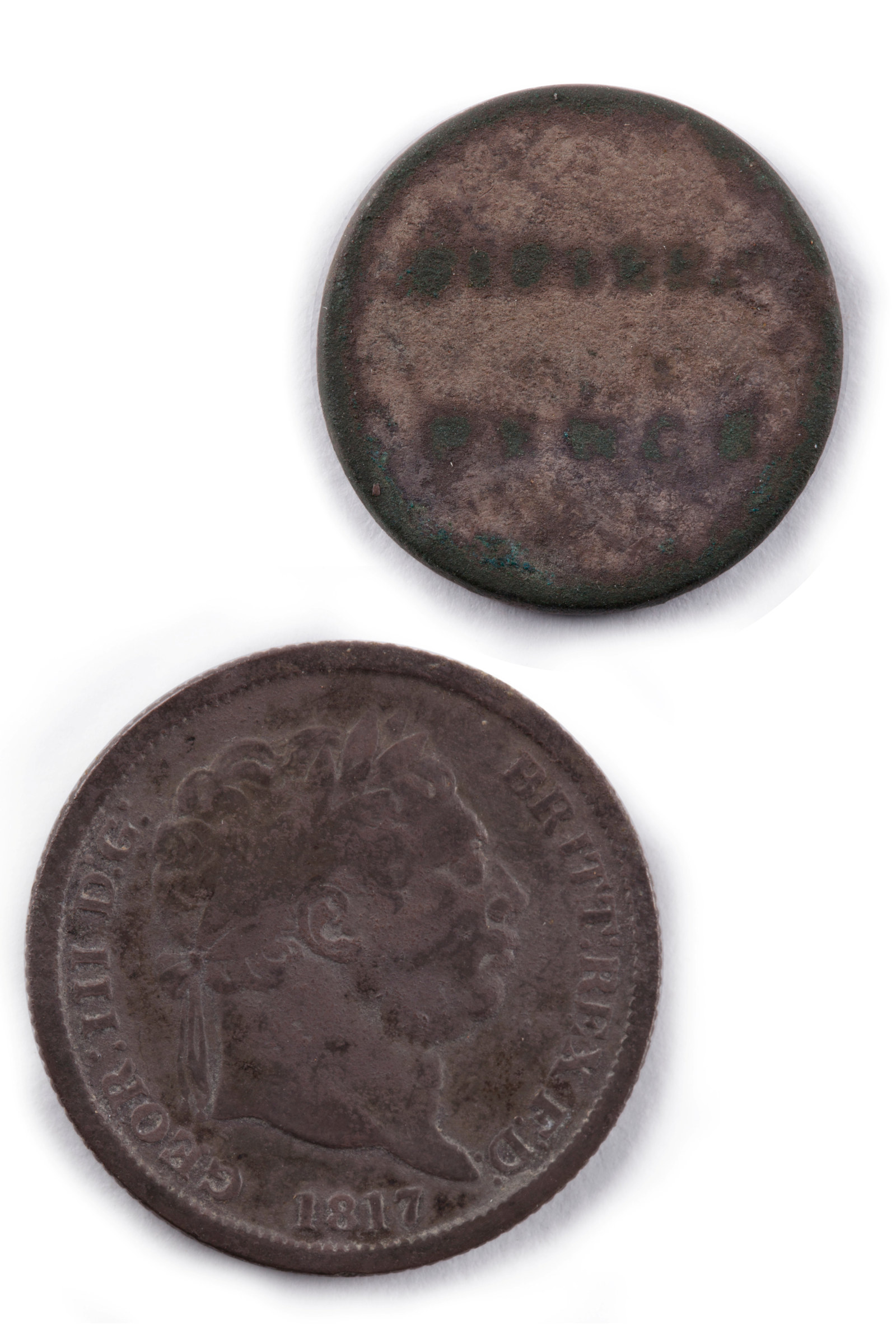What happened to convicts who broke the rules?

The convicts who lived at the Barracks had to obey lots of rules – more than 200!
If they broke any of those rules they could be punished by order of the Superintendent – men like Profile:John Connor, who was the Superintendent from 1821-1827.
There were also convicts who acted as ‘constables’, and their job was to keep the other convicts in line.
The Superintendent could have them locked in a small cell (called a solitary confinement cell), make them wear leg-irons or sentence them to spend time on the treadmill.
A convict could also be flogged (to have their back whipped) but the Superintendent was not allowed to order that punishment.
Solitary confinement
The Barracks had ten solitary confinement cells, which were used for the punishment of convicts who had returned to the Barracks late, or drunk, or for other minor crimes.
The cells were small and cramped, and had no windows to let light in. At different times of the year, they could be very hot or very cold.
Convicts feared being locked in these small cells as it was pitch black and very lonely, and they might be left in there for up to three weeks. During this time they were only given bread and water.
Leg-irons
More serious crimes were punished by forcing convicts to wear leg irons. They were very heavy (weighing up to 18 kilograms) and uncomfortable and sometimes convicts had to wear them for months.
They were fixed around a convict’s ankles by a blacksmith. To fasten them, a small metal rivet was heated up and inserted into the ‘lock’, where it cooled down and ‘locked’ in place.
There was no key to take them off; instead, a blacksmith had to hammer out the rivet while the convict was still wearing them.
When the convict tried to walk, the leg-irons rubbed against his bare ankles and became very painful. Some convicts tied a piece of rope to the centre ring and then around their waist, to stop the chain dragging on the ground.
‘Lucky’ convicts wore small leather cuffs under the leg-irons to stop the metal rubbing on their skin. Others ‘ovalled’ the leg-irons so it was possible to take them off when no one was looking.
The treadmill
The treadmill was a machine powered by convicts walking continuously on small steps to turn a wheel. It was hard physical punishment and the men working on it had to power it all day. They walked for 40 minutes at a time, before resting for 20 minutes.
The treadmill was used to grind grain, so while it was a punishment it also produced food for the colony and corn meal for the convicts’ own breakfast.
In May and June 1826, two convicts at the Barracks, Alexander Brazil and Thomas Hadlow, threatened the convict constables with knives. As punishment they were flogged, as well as being sent to work on the treadmill.
Flogging
As punishment for even more serious crimes, or for repeated misbehaviour, a convict could also be whipped, or ‘flogged’, with a cat-o’-nine-tails. However, the Superintendent could not order this punishment: it had to be approved by a magistrate of the court, or by the Governor.
To make sure that the convict’s life was not in danger while he was flogged, a doctor from the hospital (which was next door) watched the punishment.
The men who flogged the convicts were convicts themselves. They were called ‘scourgers’ and were probably given the job because they were larger and stronger than the other men.
At the Barracks, there was a yard where floggings were done, and all the convicts present at the Barracks were ordered to watch.
A convict could be flogged for many different crimes. For example, in 1833:
- Alexander Somers was given 25 lashes for leaving the Barracks without permission
- John Dennin was given 25 lashes for not doing his work
- Daniel Dickon was given 50 lashes for disobeying orders
- John Carroll was given 36 lashes for pretending to be sick.
Throughout the convict era, ‘flogging’ (whipping) convicts with a cat-o’-nine-tails was a common punishment for convicts who broke the rules.
In Australia today, flogging a prisoner with a whip or keeping them locked in a dark cell for a long period of time is not an acceptable form of punishment. We now have laws to make sure these types of punishment don’t happen.
However, in the past, people had different ideas, values and attitudes, and these types of punishments were considered to be acceptable and effective.
Who were the convict scourgers?
In 1836, convicts Edward Steele and John McDonagh were scourgers at the Barracks.
They were paid by the government – 3 shillings and 6 pence per day – and for their own protection they slept in a separate section of the Barracks, away from the rest of the men.
In 1836 convict Charles Dolphus tried to escape from the colony. He was caught and sent back to the Barracks, where he was flogged – possibly by either Edward or John.
Some of the convicts sentenced to be flogged paid the scourgers a few coins to ‘go easy’ on them (not whip them as hard).
